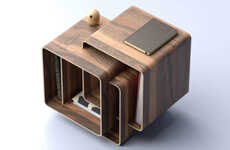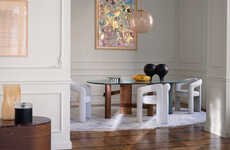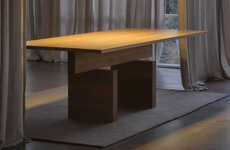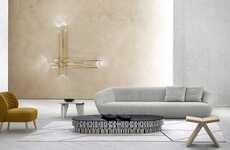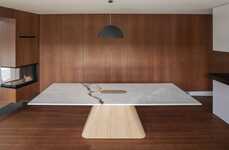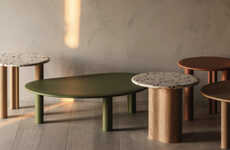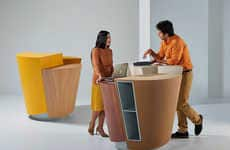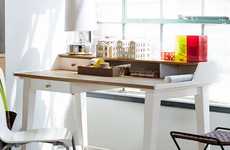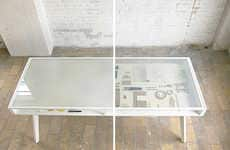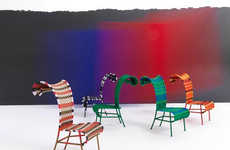
The Constructed Surface Table Features an Exceptionally Fetching Texture
Amelia Roblin — November 9, 2013 — Eco
References: ricktegelaar.nl & leibal
The most common pattern to be found on an eating surface is probably straight wood grain, often visible in separate strips from individual pieces of timber. The Constructed Surface Table displays a different motif than anything you will have seen before, resembling an unusual hybrid of wood and wicker.
This dining table by Atelier Rick Tegelaar appears to be pristinely put together, so you might be surprised to learn that its composition owes credit to the material offcuts of furniture factories. The beautiful fishbone pattern that mesmerizes your eyes is constructed from little pieces of plywood that have been arranged diagonally like tiles. This allows the Constructed Surface Table to be assembled to any dimensions, fit to serve as a kitchen table or a desk, and ever delighting its user.
This dining table by Atelier Rick Tegelaar appears to be pristinely put together, so you might be surprised to learn that its composition owes credit to the material offcuts of furniture factories. The beautiful fishbone pattern that mesmerizes your eyes is constructed from little pieces of plywood that have been arranged diagonally like tiles. This allows the Constructed Surface Table to be assembled to any dimensions, fit to serve as a kitchen table or a desk, and ever delighting its user.
Trend Themes
1. Upcycled Materials - The use of material offcuts from furniture factories to create stunning and unique designs presents opportunities for sustainable and eco-friendly products.
2. Unconventional Patterns - Experimenting with different patterns, like the fishbone pattern on the Constructed Surface Table, can provide innovative and visually appealing options for tabletop designs.
3. Flexible Dimensions - Designing tables that can be assembled to any dimensions enables versatility in usage, catering to various needs and preferences.
Industry Implications
1. Furniture Design - The furniture industry can explore using material offcuts and unconventional patterns to create unique and sustainable tabletop designs.
2. Interior Design - Interior designers can incorporate tabletops with flexible dimensions to offer customizable and adaptable solutions for clients.
3. Sustainable Manufacturing - Sustainable manufacturing practices can be implemented by utilizing upcycled materials, such as furniture factory offcuts, in the production of innovative tabletop designs.
3.8
Score
Popularity
Activity
Freshness

